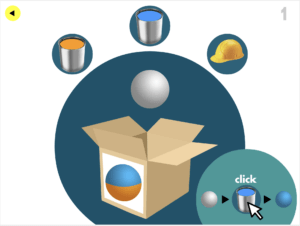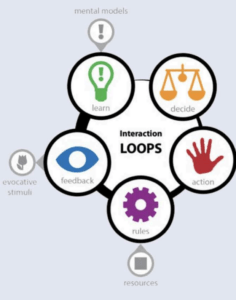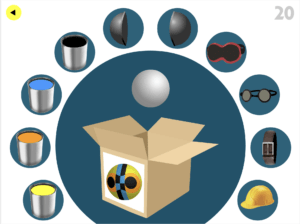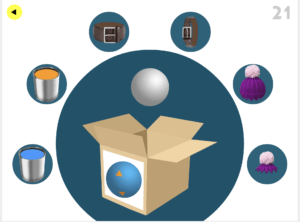Balls was a game created by Barte Bonte in 2007 and initially released on his website. It is now playable via Steam and various other gaming platforms, as well as the 25 levels that he offers for free on his website (which is how I accessed the game).
The level structure of the game uses a semblance of interaction loops in order to create a relaxed, freeform gameplay experience.
The mechanics of the game are quite simple – divided up into levels, the player has to recreate the pattern of the ball on the box using the limited tools that they have. These tools include divider tools (to help create the intricate patterns), the paint itself, and fun additions that replace the paint (including flower and grass seeds). There are no other instructions provided to the player, other than how to add details to the ball (by clicking on the tool in the circles surrounding the ball).

These levels vary in their intricacy – as the levels progress, the designs do become harder either because of how many tools they offer and/or because of the tools that they offer. In this regard, the level structure of the game create a semblance of an interaction loop, as described in Daniel Cook’s article. Each level restarts the interaction loop and increases the amount of practice the player has in recreating the next pattern.
Where this game detracts from the classic definition of an interaction loop is in Cook’s claim that the loop allows users to gain mastery only after “repeated passes through each of the steps”

In the context of the levels and because each pattern is so intricate in its own way, I would claim that each iteration of the level (after a player fails to recreate the pattern) represents a clearer one-to-one match with Cook’s definition of the interaction loop. Each level in that regard can be considered an interaction loop, but perhaps not in building mastery of using the tools provided (as each pattern might cause the tool to be used in a different way) but rather in their ability to identify how to recreate the pattern itself.
The mastery of the game then has less to do with the overall mechanics of the game and more with the original premise.
This overall creates a feeling that each individual level can be considered its own game. The mechanics of the game are simple, without a narrative, which allows the player to stop after any level they desire and gain the overall idea of the game. The level number itself does not ensure that it will be harder than the next level, in fact, I found that some levels were actually easier than the ones before them (pictured below – Level 20 which was significantly harder for me than Level 21).
Level 20:

Level 21:

Thus the motivation to continue through all these levels purely relies on Bonte’s creation of an addicting game. Because each level is individualized with the game lacking too many instructions or limitations (for instance, a player could try a level as many times as they please), the game is easy to learn, without each level feeling like too much of a jump in player skill level. The gameplay experience is therefore more relaxed, with an emphasis on the feeling of satisfaction when you complete an especially difficult puzzle. This drives your motivation to continue on to the next level and see how quickly you can then complete that level. Even if you choose to stop playing there, the game does not feel incomplete because each level is its own entity. At times achieving the pattern can be skill, but some of it can hinge on luck as well – you might happen to have used the right tool.
I quite enjoyed playing this game – it even feels like a game you can replay (which I did with the 25 levels provided, because oftentimes when you continue to the next level, you forget how you had completed the pattern in the first place). My only critique or recommendation for the game is to have an undo button. At some points, I would be close to completing the pattern but then due to one misclick, I would have to start all over again. Additionally, if there was some sort of incentive for replaying a level or an indication of mastery that the game provides. This could manifest in some kind of “best moves” or shortest moves to achieve the pattern, where players could continue to replay until they achieved this best moves score. These recommendations are with the understanding that the game is designed to be simple, with a more freeform gameplay, where players can take things at their own pace, but perhaps elevating the gameplay for an additional challenge to make the game even more addicting.




